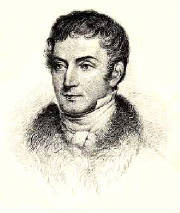 The purpose of reviewing is to assist the process of learning from experience. This paper outlines some active approaches to reviewing that offer a way forward when words are not enough, or when words get in the way.
The purpose of reviewing is to assist the process of learning from experience. This paper outlines some active approaches to reviewing that offer a way forward when words are not enough, or when words get in the way. ACTIVE REVIEWING
ACTIVE REVIEWING
Active reviewing improves our ability to learn from experience. Most active reviewing is simple, basic and direct. Used wisely it can enliven and sharpen the process of reviewing experience.
Over-reliance on words can restrict our ability to learn from experience, however articulate or inarticulate we may think we are.
Talk and action tend to inhabit distinct and separate worlds, especially when there is a clear demarcation line between doing and reviewing.
The more separate these worlds, the less likely it is that learning from experience is happening.
Active reviewing brings these worlds closer together, by narrowing the gap between theory and practice.
The benefits of active reviewing 
More effective learning from experience.
An improved confidence in translating words into action, trying out ideas, making decisions happen, and turning plans into reality.
Soundly based resolutions and action plans. The transition of learning from a course is more likely to happen if plans for the future have already been rehearsed in some way while on the course.
Language is more likely to be used accurately, responsibly and sensitively. When language and action are no longer 'safely' separated, the quality of communication can only improve.
Active reviewing complements discussion-based methods - it does not replace them.
There is a risk that active reviewing might be seen as 'anti-language' or as an attack on the value of verbal reviewing. It is the trainer's responsibility to maintain a suitable balance between language, action and any other media which are used for reviewing. Active reviewing methods simply extend the choices available for learning from experience.

Preparing for active reviewing
Setting up new languages: It is useful to have a wide range of options instantly available when reviewing. If a trainer intends to use active techniques during a review, an earlier session involving communicating through action can prime the group for using 'active language'. 'Active Images' is an example of setting up and using a new language: Active images: On a course which has 'teamwork' and 'leadership' as themes, each group member can be asked to demonstrate an ideal active image of 'teamwork' by directing the rest of the group in a short realistic or symbolic presentation. These presentations can then be readily adapted during later reviews to illustrate how the group is actually working as a team, and to represent people's changing views about teamwork or leadership.
Active images: On a course which has 'teamwork' and 'leadership' as themes, each group member can be asked to demonstrate an ideal active image of 'teamwork' by directing the rest of the group in a short realistic or symbolic presentation. These presentations can then be readily adapted during later reviews to illustrate how the group is actually working as a team, and to represent people's changing views about teamwork or leadership.
Setting up conventions: A number of games, communication exercises or movement exercises can be used to set up a range of conventions for use during reviewing. Strict observance of conventions can be just as vital to the success of a review as it can be to the success of a game. A group which already knows various conventions and has experienced their value, is more likely to be responsive when such conventions are re-introduced during a review. The discipline of 'rounds' or of 'sustained silences', or the precedent of moving everyone else or of freezing during action - these are just some of the conventions that can be valuable during reviewing.
Conventions for conventions: If conventions are simply established by default (e.g. that people always sit in the same places and keep to the same pecking order in group discussions), then it is unlikely that effective reviewing will get off the ground. By making alternative conventions available in advance, trainers create more room for manoeuvre during reviews - both for themselves and for participants. http://reviewing.co.uk/actrev.htm











No comments:
Post a Comment
Please, leave your comment here: